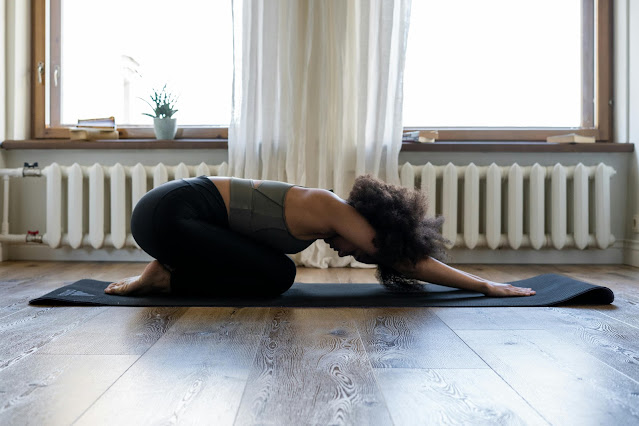Somatic Yoga vs. Hot Yoga: Which Practice is Right for You?
In the diverse world of yoga, two styles are becoming increasingly popular: somatic yoga and hot yoga. Whether you're an experienced practitioner or just starting, knowing the differences between these two practices can help you find the right fit for your wellness journey.
What is Somatic Yoga?
Somatic yoga is more than just a physical practice; it's a pathway to self-awareness and relaxation. The term "somatic" comes from the Greek word "soma," meaning the body as experienced from within. This style emphasizes gentle movements, breath awareness, and mindfulness, allowing practitioners to connect deeply with their bodies.
Key Benefits of Somatic Yoga:
- Enhanced Body Awareness: By focusing on sensations and movements, you learn to listen to your body’s needs.
- Stress Reduction: The mindful approach promotes relaxation, helping to reduce anxiety and tension.
- Increased Flexibility: Gentle movements encourage flexibility and ease in the body without the strain.
Getting Started with Somatic Yoga: A Step-by-Step Guide
1. Create a Comfortable Space
- Find a quiet area where you can practice without distractions.
- Use a yoga mat or a soft surface for comfort. (here are some top-rated options of yoga mats that work great for both somatic and hot yoga.)
2. Set an Intention
- Take a moment to close your eyes and set a gentle intention for your practice. This could be focusing on relaxation, body awareness, or self-discovery.
3. Start with Breath Awareness
- Sit or lie down comfortably.
- Take deep, slow breaths, feeling your belly rise and fall with each inhale and exhale.
- Notice how your breath feels in your body.
4. Gentle Movement
- Begin with slow, mindful movements. Focus on how each movement feels in your body.
- Try simple actions like:
- Neck Rolls: Gently roll your head from side to side, noticing any tension.
- Shoulder Shrugs: Raise your shoulders towards your ears and then release them down.
- Wrist and Ankle Rolls: Rotate your wrists and ankles to release any stiffness.
5. Explore Sensations
- As you move, pay attention to the sensations in your body.
- If you feel tightness or discomfort, pause and breathe into that area.
- Allow your body to move in a way that feels natural and comfortable.
6. Incorporate Poses
- Gradually include gentle yoga poses, such as:
- Cat-Cow Stretch: On all fours, alternate between arching and rounding your back.
- Child’s Pose: Sit back on your heels and stretch your arms forward, relaxing your forehead on the mat.
- Reclining Bound Angle Pose: Lie on your back, bringing the soles of your feet together and letting your knees fall open.
7. Finish with Relaxation
- End your practice by lying down in a comfortable position (like Savasana).
- Close your eyes and take several deep breaths, allowing your body to relax completely.
- Spend a few minutes in stillness, noticing how your body feels after your practice.
8. Reflect
- After finishing, take a moment to reflect on your experience.
- Consider journaling about any insights or feelings that arose during your practice.
Tips for Practicing Somatic Yoga
- Listen to Your Body: Always prioritize how your body feels and avoid any movements that cause pain.
- Practice Regularly: Incorporating somatic yoga into your routine can deepen your body awareness over time.
- Be Patient: Allow yourself to explore and discover your body without judgment.
With somatic yoga, the focus is on gentle movement and awareness, creating a peaceful and healing practice.
(Whether you’re doing hot or somatic yoga, having the right mat is essential for comfort and grip. Shop our favorite yoga mats here )
What is Hot Yoga?
Hot yoga, on the other hand, is an invigorating practice performed in a heated room, typically between 95-105°F (35-40°C). This style is known for its dynamic sequences, often based on traditional yoga forms like Bikram Yoga, which follows a specific set of poses.
Key Benefits of Hot Yoga:
- Improved Flexibility: The heat allows for deeper stretching and increased range of motion in the muscles.
- Detoxification: Sweating in a hot environment helps cleanse the body of toxins.
- Cardiovascular Benefits: The intensity of the practice can improve heart health and stamina.
Getting Started with Hot Yoga: A Step-by-Step Guide
1. Choose the Right Class
- Look for beginner-friendly hot yoga classes at local studios.
- Classes can vary in intensity, so pick one that suits your level.
2. Stay Hydrated
- Drink plenty of water before class to avoid dehydration.
- Bring a water bottle to sip on during class as well.
(Hydration is key during hot yoga! Make sure to bring a sturdy, insulated water bottle. Check out this highly-rated water bottle to stay cool and hydrated throughout your session.)
3. Wear Lightweight Clothing
- Opt for breathable, moisture-wicking clothes since you’ll sweat a lot.
- Avoid heavy or restrictive outfits.
Whether you’re practicing somatic or hot yoga, wearing the right clothes makes a big difference. Shop these stylish and comfortable yoga clothes to enhance your practice.
4. Bring a Towel and Mat
- Bring a towel to wipe off sweat during practice.
- Some studios may provide mats, but it’s good to bring your own or rent one.
Hot yoga will make you sweat, so it’s essential to bring a towel. Check out these highly absorbent yoga towels to stay dry and comfortable during your practice.
5. Arrive Early
- Give yourself time to get used to the heated room before class starts.
- Find a comfortable spot and settle in.
6. Pace Yourself
- The heat can be intense, so take breaks when needed.
- Listen to your body and don’t push yourself too hard, especially in the beginning.
7. Breathe Deeply
- Focus on slow, deep breaths to stay calm and centered during the poses.
- Breathing will help you manage the heat and stay focused.
8. Cool Down and Rest
- After class, spend a few minutes in Savasana (lying down) to cool down.
- Continue drinking water to rehydrate your body.
Final Tips:
- Don’t worry if you feel overwhelmed at first—hot yoga takes time to get used to.
- Be consistent, and you’ll soon start noticing the benefits like increased flexibility and stress relief!
In hot yoga, tracking your heart rate and calories burned can help you gauge your workout intensity. Here’s a smart watch that will keep you in tune with your body during class.
Comparing Somatic Yoga and Hot Yoga
While both styles offer unique benefits, they cater to different needs and preferences:
- Approach to Movement: Somatic yoga focuses on gentle, mindful movements that encourage body awareness, while hot yoga emphasizes vigorous, strength-building postures.
- Mind-Body Connection: In somatic yoga, the focus is on internal sensations and awareness, fostering a deep connection with the self. Hot yoga, however, often prioritizes physical endurance and sweat, appealing to those seeking a more intense workout.
- Ideal Practitioners: If you’re looking for relaxation and stress relief, somatic yoga may be the right choice for you. If you prefer a more vigorous, sweat-inducing workout, hot yoga might be the better fit.
For somatic yoga, listening to relaxing music or a guided practice can deepen your experience. These wireless headphones are perfect for staying focused and in the zone
How to Decide Which Practice is Right for You
- Consider Your Goals: If you aim to enhance relaxation and body awareness, somatic yoga is a great option. For those seeking physical challenge and detoxification, hot yoga is ideal.
- Try Both: Many studios offer trial classes for both styles. Attend a few sessions to see which practice resonates with you.
- Listen to Your Body: Pay attention to how your body feels during and after each practice. Choose the style that leaves you feeling refreshed and energized.
Conclusion
Ultimately, the choice between somatic yoga and hot yoga comes down to personal preference and wellness goals. Both practices offer valuable benefits for your physical and mental health. Whether you opt for the gentle approach of somatic yoga or the invigorating heat of hot yoga, the important thing is to enjoy the journey and honor your body’s needs.
Ready to start your yoga journey? Before you wrap up your yoga journey, make sure you’re fully equipped with the right gear to enhance your experience. Here are some of the top products I recommend
Written By Anamika Sharma












0 Comments